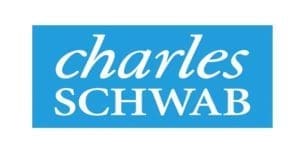
A Solo 401(k) offers higher contribution limits than other self-employed retirement accounts. It also requires less hassle than a Traditional 401(k). That’s a win-win.
Plus, depending on the Solo 401(k) provider, advanced options like Roth 401(k) contributions and 401(k) loans may be available. Let’s take a closer look at how Solo 401(k)s work and what the best Solo 401(k) providers have to offer.
What’s a Solo 401(k)?
Solo 401(k)s aren’t necessarily a new type of retirement account. Also called a one-participant 401(k) plan, they’re simply a Traditional 401(k) account available to business owners who don’t have any employees (with the exception of a spouse).
One of the biggest benefits that a Solo 401(k) offers is high contribution limits. In 2020, business owners can stash up to $19,500 in employee elective deferrals. They can also contribute up to 25% of their net self-employment income for a total annual contribution limit of $57,000 (plus an additional $6,500 catch-up allowance for savers over 50).
Another benefit of the Solo 401(k) is that it comes with less red tape than a Traditional 401(k). Without employees to consider, there’s no need to perform annual nondiscrimination testing. You may also be exempt from annually reporting your plan’s investments and financial condition to the IRS via file Form 5500-SF until you reach $250,000 in assets.
But once you hire an employee, you’ll be required to follow nondiscrimination testing guidelines. Generally, you’ll also need to allow employees who meet your 401(k) plan guidelines to join the plan.
When does it make sense to open a Solo 401(k)?
Here are three reasons why you may want to open a Solo 401(k):
- You want to make Roth contributions. SEP-IRAs and SIMPLE IRAs aren’t allowed to accept Roth contributions. But several Solo 401(k) providers allow Roth contributions, including TD Ameritrade, Vanguard and others listed below.
- You want to contribute more than the SEP-IRA allows. With the SEP-IRA, your maximum contribution is always capped at 25% of your annual compensation. So with $50,000 in income, you’d be limited to an annual contribution of $12,500. But with the Solo 401(k), you can make dollar-for-dollar contributions up to $19,500 (or $26,600 if you’re over 50).
- You and your spouse run a business together. In that case, your Solo 401(k) contribution limits effectively double. Which is a huge deal.
If any of these situations apply to you, opening a Solo 401(k) could be a smart move.
Best Solo 401(k) providers
Do you think a Solo 401(k) is right for you? Here are six of the best Solo 401(k) providers on the market today.
| Company | Investment options | Roth contributions | Loans | Fees |
|---|---|---|---|---|
| TD Ameritrade | Many | Yes | Yes | None |
| Fidelity | Many | No | No | None |
| Vanguard | Limited | $Yes | No | $20 fee per fund per year |
| Charles Schwab | Many | No | No | None |
| E-Trade | Many | Yes | Yes | No annual fees |
| Rocket Dollar | Most | Yes | Yes | Charge trade fees for some mutual funds |

1. TD Ameritrade Solo 401(k)
The TD Ameritrade Solo 401(k) plans check all the right boxes. First, they’re low-cost — TD Ameritrade charges no setup or maintenance fees. They also don’t charge commissions or trade fees on stocks, mutual funds or ETFs.
Unlike many of its competitors, TD Ameritrade lets you borrow against the assets in your Solo 401(k). They also let you make Roth contributions and allow rollovers from other retirement accounts.
TD Ameritrade has a great variety of investment choices and an advanced trading platform. And while some brokers require paper check contributions, TD Ameritrade also accepts direct deposits to Solo 401(k) accounts.

2. Fidelity Solo 401(k)
The biggest advantage of opening a Solo 401(k) with Fidelity is the impressive investment flexibility they offer. With a Fidelity Solo 401(k), you can invest in stocks, bonds, mutual funds, ETFs and even CDs.
Cost is another one of Fidelity’s strengths. They don’t charge set-up or ongoing fees. And they offer commission-free trades on stocks and ETFs.
But there are some unfortunate limitations to the Fidelity Solo 401(k). Most glaringly, you can’t make contributions online. As crazy as it sounds in the internet age, Fidelity currently only accepts mail and phone contributions. Investors also may be disappointed to learn that Roth contributions and loans are both unavailable with the Fidelity Solo 401(k).

3. Vanguard Solo 401(k)
Vanguard offers Solo 401(k) account holders over 100 mutual fund choices including 43 Admiral Share index funds (Vanguard’s lowest expense ratio funds). There is also no required minimum investment to open a Solo 401(k) account. Investors can make Roth contributions, but loans are not allowed.
The biggest downside to the Vanguard Solo 401(k) is account holders are charged $20 per year for each fund they invest in (though some investors may qualify for a fee waiver). Vanguard’s Solo 401(k) could get expensive if you like to spread out your money throughout several funds.
Also, if you’d like the ability to buy individual stocks and bonds, you’ll want to pick a different Solo 401(k) provider. Vanguard currently doesn’t even give investors ETF investment choices inside their Solo 401(k) plans.

4. Charles Schwab Solo 401(k)
The Schwab Individual 401(k) Plan is another low-cost option for investors. Schwab doesn’t charge any fees on their Solo 401(k) accounts. In fact, their index funds and ETF expense ratios are some of the lowest in the industry. And they recently waived fees and commission on most types of trades.
You also get a lot of investment flexibility with Schwab. Stocks, mutual funds and ETFs, along with fixed income sources like bonds and bond funds are all available to trade. If you’d like to roll over an existing account, Schwab will allow you to move funds from 401, 403, 408 or 457 accounts.
Schwab doesn’t allow Solo 401(k) loans, so if that’s important to you, you’ll want to choose a different provider. They also, unfortunately, don’t allow Roth contributions.

5. E-Trade Solo 401(k)
E-Trade Solo 401(k) is a strong choice for investors seeking account features that other providers don’t offer. First, E-Trade allows investors to open Roth Solo 401(k) accounts. They also allow loans on both their Traditional and Roth Solo 401(k)s.
E-Trade doesn’t charge any fees to open an account. And there are no commissions on stock and ETF investments.
The biggest downside to E-Trade is that not all of their mutual funds come with free trades. And you may not be able to find as many inexpensive index funds as offered by fund behemoths like Vanguard and Fidelity. But they do have over 4,500 no-load, commission-free funds.
Also, keep in mind that E-Trade is a fully online provider. So if strong customer service or the ability to visit a local branch are top priorities, you may want to choose a different provider.

6. Rocket Dollar Solo 401(k)
If you’d like to have checkbook control over your Solo 401(k), Rocket Dollar’s Self-Directed Solo 401(k) plans may be a good choice.
Checkbook control makes it possible to invest in products that are typically unavailable inside a 401(k). In a self-directed 401(k), you’d have the freedom to invest in real estate, startups, precious metals and other alternative investment products.
With a Rocket Dollar Solo 401(k), your investment options are virtually unlimited. However, you pay for investment flexibility in higher fees. Rocket Dollar charges a hefty $360 set up fee and an ongoing $15 per month service fee.
Alternatives to the Solo 401(k)
There are a few alternatives for small business owners who don’t think that the Solo 401(k) is the right fit. First, anyone with earned income can open up an individual IRA (Traditional or Roth). But when it comes to plans specifically geared towards small business owners, the SIMPLE IRA and SEP-IRA are two other main options.
With the SIMPLE IRA, you can contribute up to $13,500 per year. If you have employees, you’ll need to either match their contributions up to 3% or make a 2% nonelective contribution. The SIMPLE is easy to open and requires minimal management, but the low contribution limits could be an issue for aggressive savers.
The SEP-IRA could be a solid option if you don’t plan to save more than 25% of your compensation each year. They’re easy to set up and have low administrative costs.
If you’re looking to open a SEP-IRA, you may want to consider Betterment. Their custom portfolios offer automatic rebalancing and use advanced tax-saving strategies. Plus, they charge rock-bottom advisory fees starting at 0.25% of assets under management.
Refinance student loans, get a bonus in 2024
| Lender Name | Lender | Offer | Learn more |
|---|---|---|---|

|
$500 Bonus
*Includes optional 0.25% Auto Pay discount. For 100k or more.
|
Fixed 5.24 - 9.99% APR*
Variable 6.24 - 9.99% APR*
|
|

|
$1,000 Bonus
For 100k or more. $300 for 50k to $99,999
|
Fixed 5.19 - 10.24% APPR
Variable 5.28 - 10.24% APR
|
|

|
$1,000 Bonus
For 100k or more. $200 for 50k to $99,999
|
Fixed 5.19 - 9.74% APR
Variable 5.99 - 9.74% APR
|
|

|
$1,050 Bonus
For 100k+, $300 for 50k to 99k.
|
Fixed 5.44 - 9.75% APR
Variable 5.49 - 9.95% APR
|
|

|
$1,275 Bonus
For 150k+, $300 to $575 for 50k to 149k.
|
Fixed 5.48 - 8.69% APR
Variable 5.28 - 8.99% APR
|
|

|
$1,250 Bonus
For 100k+, $350 for 50k to 100k. $100 for 5k to 50k
|
Fixed 5.48 - 10.98% APR
Variable 5.28 - 12.41% AR
|
Not sure what to do with your student loans?
Take our 11 question quiz to get a personalized recommendation for 2024 on whether you should pursue PSLF, Biden’s New IDR plan, or refinancing (including the one lender we think could give you the best rate).

Great content! I learned a ton and I’m excited to get started with my self employed retirement plan account.